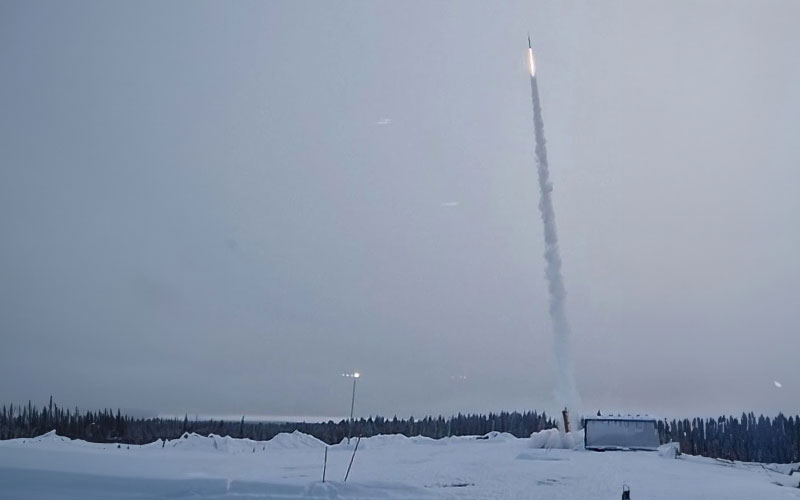
A pair of T-Minus Engineering DART missions that were slated to be launched from Esrange in Sweden last week faced -35°C temperatures, causing one of the flights to malfunction and the other to be called off.
The first of the two missions was launched on 7 February from the brand-new Launch Complex 3 at the Esrange Space Center. Following a five-second burn, the separation of the 2.3-metre booster was completed successfully. While this initially appeared to be a textbook launch, an anomaly occurred 12 seconds into the flight, resulting in the early deployment of the mission’s payload. The rocket carried a wave propagation experiment and a Langmuir probe for Sweden’s KTH Royal Institute of Technology.
In response to questions from European Spaceflight, T-Minus explained that the payload was likely ejected passively instead of being actively triggered by the rocket’s onboard computer. The company is currently attributing the anomaly to the cold conditions.
Prior to the launch, T-Minus had told European Spaceflight that it had made a number of modifications to its DART rocket to deal with the cold temperatures, including the installation of heaters. The measures did, however, not go far enough.
“In the future, we’ll likely heat both the booster and dart with warm air until the moment of launch to keep the temperature above freezing,” explained T-Minus CEO Hein Olthof. “However, we’re happy that we could prove that the booster performs well in the lowest temperature region of its usage envelope.”
While procedures to prevent early deployment of the payload had been quickly developed following the identification of the cause of the anomaly, what remained of the launch campaign did not permit enough time to verify the effectiveness of the revised procedures. As a result, the second DART mission was canceled.
In a statement on its LinkedIn page, T-minus explained that despite the challenges, the company looked forward to continuing cooperation with the Swedish Space Corporation (SSC), a government-owned company that markets and manages the Esrange Space Center.
The T-Minus DART mission was the first to utilize the new Launch Complex 3 at Esrange following its inauguration a year ago. While Esrange’s other infrastructure is focused on suborbital flights, Launch Complex 3 was built to host larger rockets capable of deploying payloads into orbit. According to SSC, the company is currently deep into discussions with several orbital launch providers interested in utilizing the facility.




